Kamālī Chakradar – कमाली चक्रदार (2)
Literal meaning of kamali: feat; wondrous thing
Kamali Chakradar 2 Characteristics
- Length of chakradar: 113 matras (7 avartans plus sam)
- Length of main repetition: 37 matras
- Length of mukhra: 10 matras
- Length of tihai: 27 matras (9-9-9 with 9 dhas)
- Length of pause between main repetitions: 1
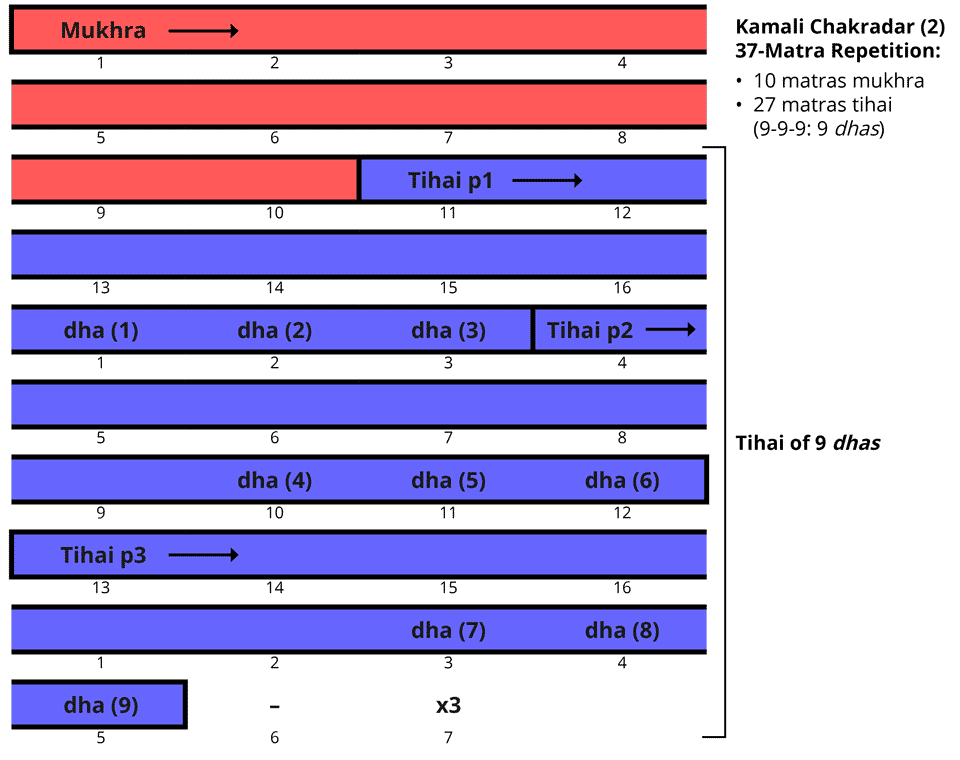
About the Kamali Chakradar 2
Version 2 of the kamali chakradar is an extended version of Kamali Chakradar 1: version 1 is 5 avartans long, and version 2 is 7 avartans long.
It has the same structural feature of 9 dhas in each repetition, where the same dhas (1, 5, 9) fall on sam during the 1st, 2nd, and 3rd repetitions of the chakradar. And so it creates the same kamali effect, but the main repetition is longer.
Kamali Chakradar 2 Mathematics
- Length of chakradar = 113 matras (7 avartans plus sam: 7 x 16 = 112 + 1)
- Length of repetition = 37 matras (37 x 3 = 111 + 2 = 113)
- Length of pause between main repetitions: 1 (x2 = 2)
Notice that 37 x 3 = 111 (not 113), so we must add a 1-matra pause between each main repetition to reach 113.
For the 37-matra repetition, the mukhra-tihai division is:
- Length of mukhra: 10 matras
- Length of tihai: 27 matras (9–9–9 including 9 dhas)
For the 27-matra tihai, each tihai repetition is 9 matras in length. And each 9-matra repetition is divided 6 + 3: 6 matras of bol, plus dha-dha-dha.
So the mukhra here is shorter than in Kamali 1, but the tihai is much longer. This gives the second version a different character.
Like the kamali chakradar (1), slight variations in the math can be made to this form, but the 9 dhas must always fall on the same matras.
Which dhas fall on sam?
The same dhas fall on sam as in the Kamali Chakradar 1 form:
- In the first repetition, dha (1) will fall on sam
- In the second repetition, dha (5) will fall on sam
- In the third repetition, dha (9) will fall on sam

But because the main repetition is longer in the kamali (2), there are more avartans between each of the key dhas. In the kamali (1) form, dhas 1, 5, and 9 fall on sam with two avartans in between. In the kamali (2) form, those dhas fall on sam with three avartans in between.
Avartans where dha falls on sam in Kamali Chakradar 1:
- 2nd avartan: dha (1)
- 4th avartan: dha (5)
- 6th avartan: dha (9)
Avartans where dha falls on sam in Kamali Chakradar 2
- 2nd avartan: dha (1)
- 5th avartan: dha (5)
- 8th avartan: dha (9)
Kamali Chakradar 2 Form:
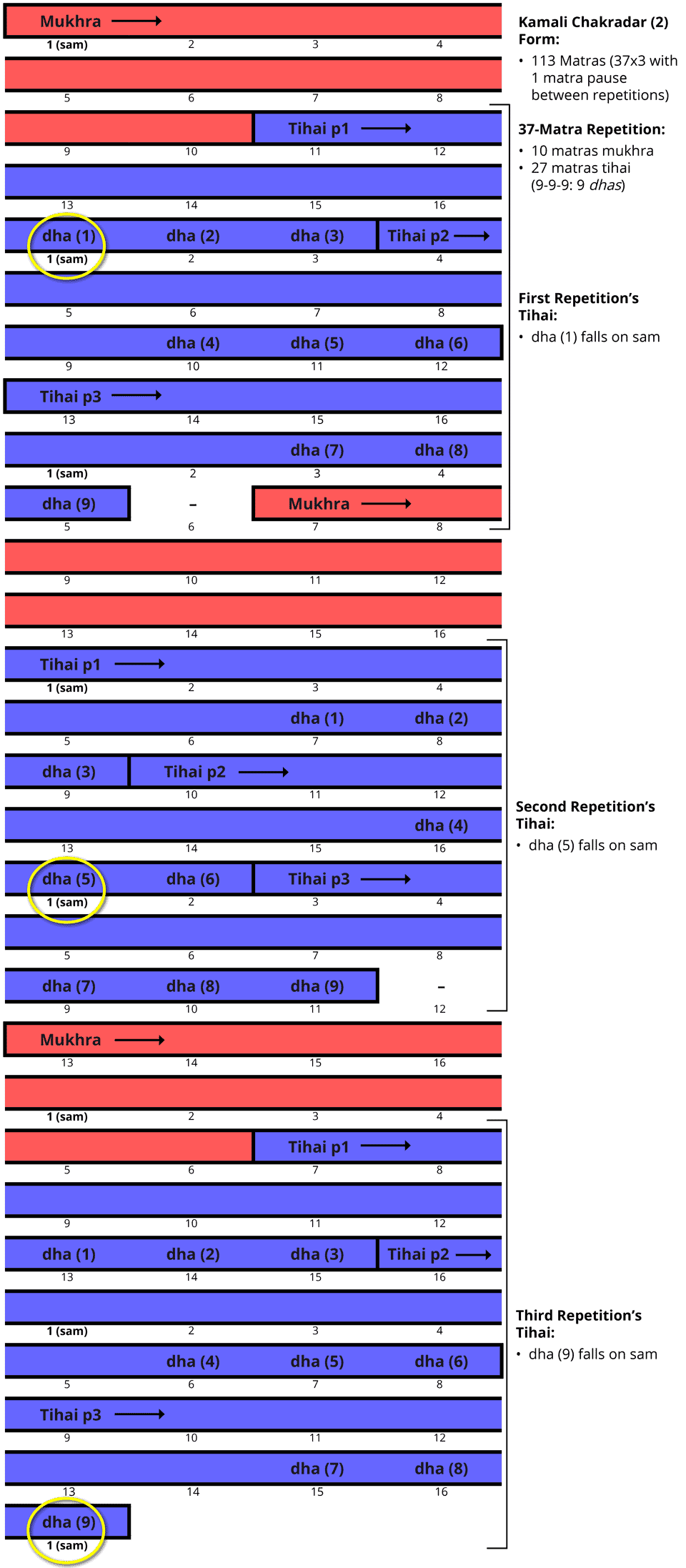
Kamali Chakradar 2 Example 1
37-Matra Repetition for a Benares Kamali Chakradar 2:
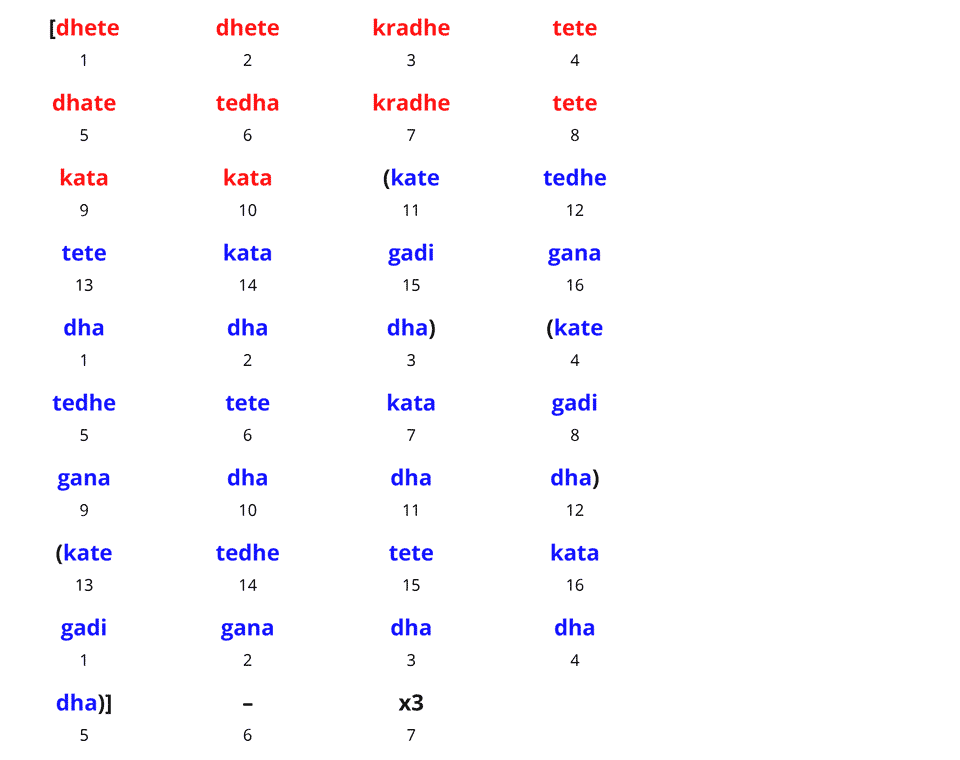
Full Chakradar:
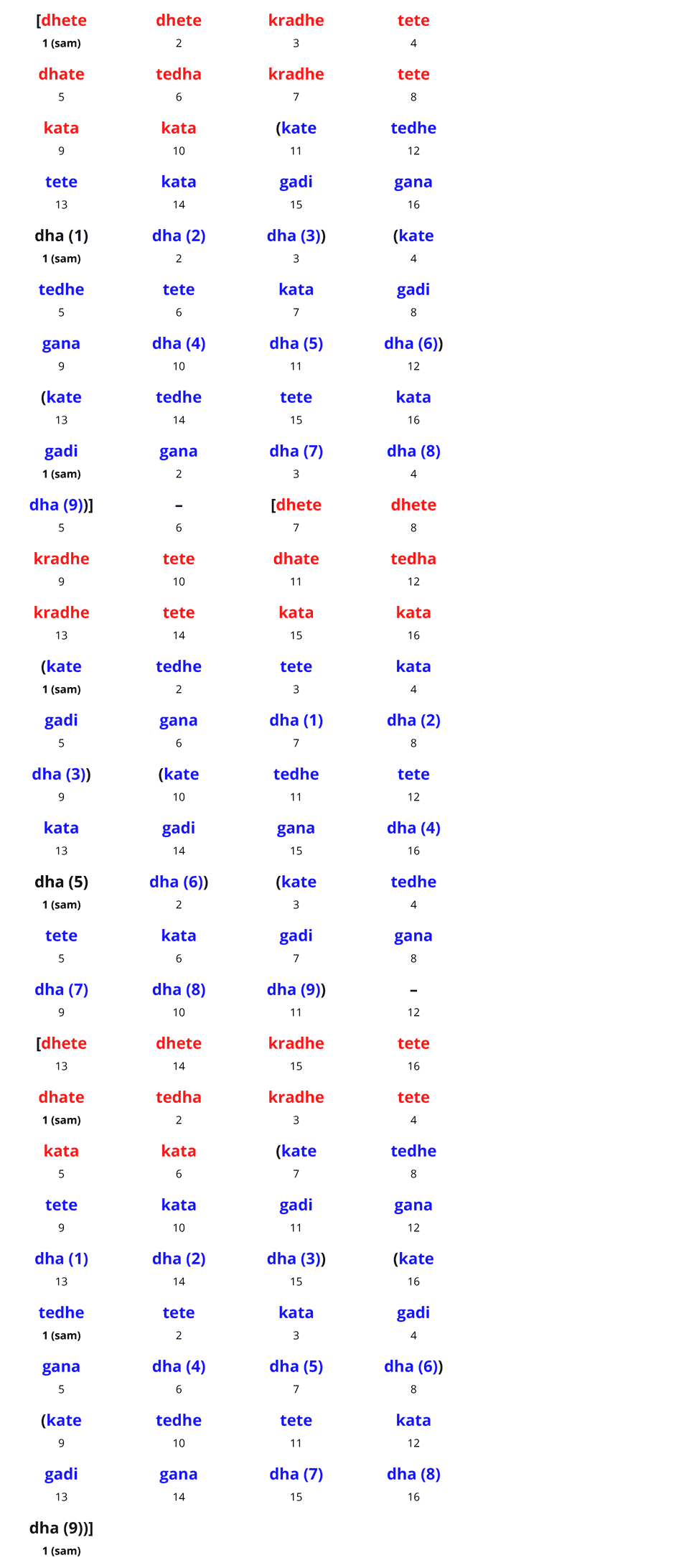
Kamali Chakradar 2 Example 2
Below is the 37-matra repetition for another Benares Kamali Chakradar. Notice that this chakradar has two lays (divisions per matra): the mukhra is in chaugun (4:1) and the tihai is in atgun (8:1):
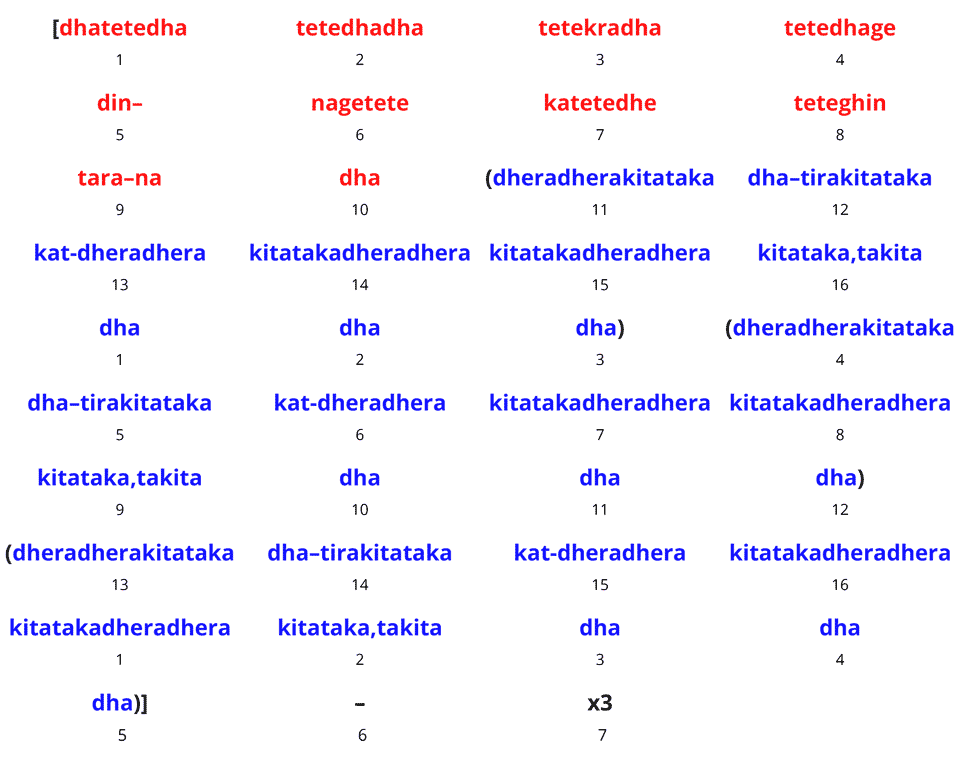
Full Chakradar:
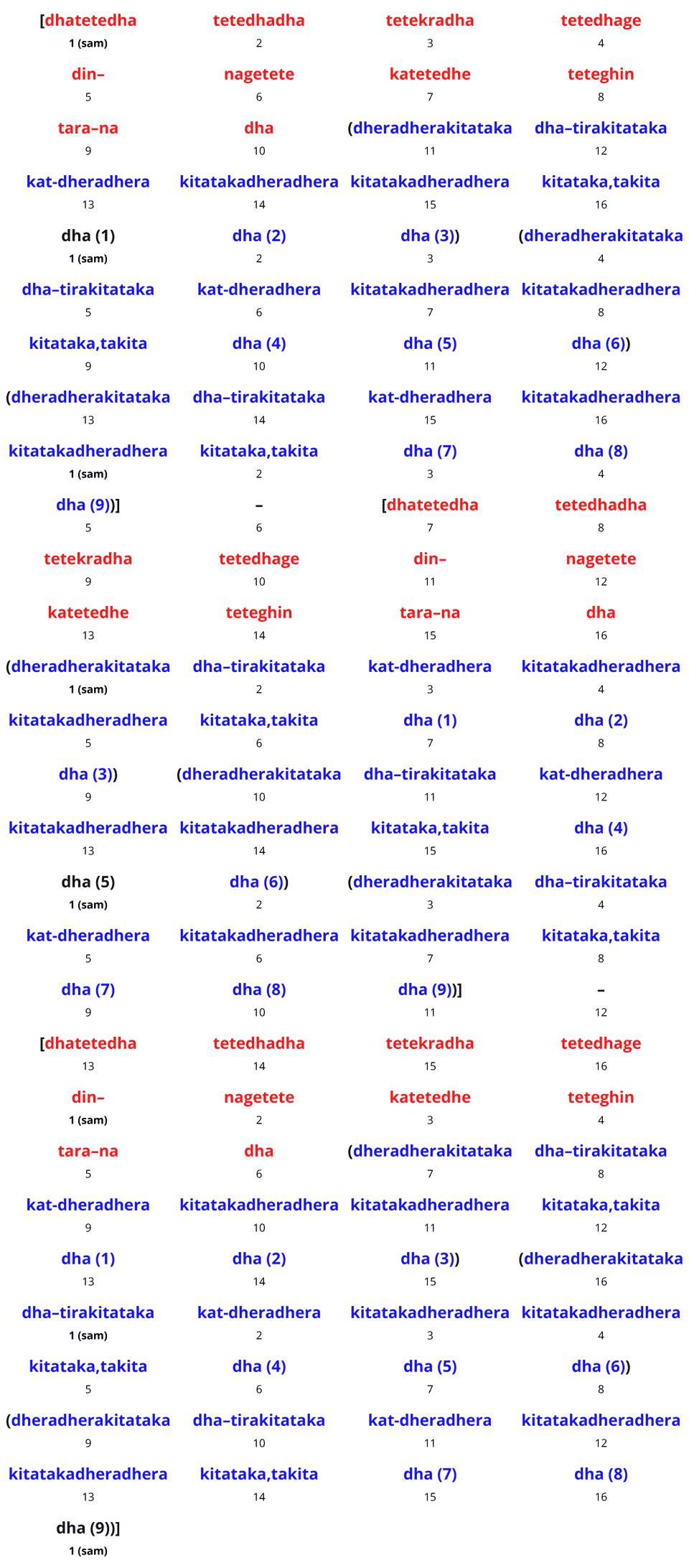
References
Misra, Chhote Lal. Tal Prabandh. New Delhi: Kanishka Publishers, 2006. (Hindi)
—. Playing Techniques of Tabla – Banaras Gharana. New Delhi: Kanishka Publishers, 2007.